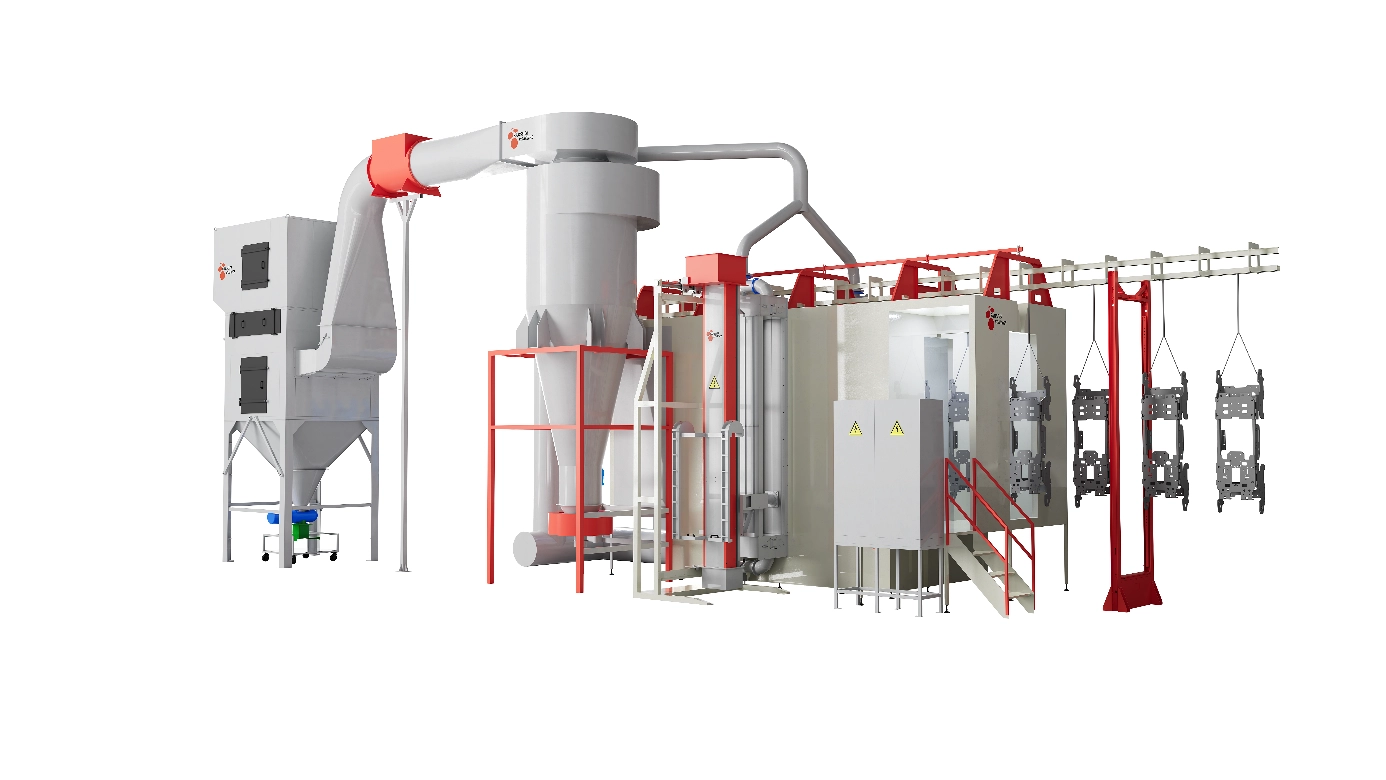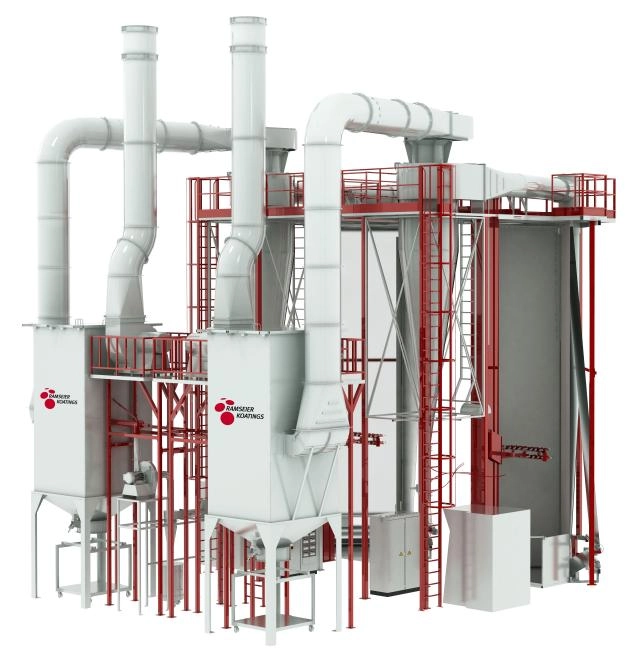Content Menu
● Understanding Powder Hoppers
>> What Is a Powder Hopper?
>> Common Applications
● Key Design Features
>> Material of Construction
>> Hopper Shape and Geometry
>> Discharge Mechanisms
● Powder Flow Characteristics
>> Flowability and Cohesion
>> Bridging and Rat-Holing
>> Flow Aids
● Capacity and Sizing
>> Determining Hopper Capacity
>> Sizing Considerations
● Cleaning and Maintenance
>> Cleanability
>> Maintenance Requirements
● Integration with Downstream Equipment
>> Compatibility
>> Automation and Control
● Safety and Regulatory Compliance
>> Safety Features
>> Regulatory Compliance
● Customization and Special Features
>> Custom Designs
>> Special Features
● Choosing the Right Powder Hopper
>> Assessing Your Needs
>> Consulting with Experts
● Frequently Asked Questions
>> What is the difference between a conical and a pyramidal hopper?
>> How do I prevent bridging and rat-holing in my powder hopper?
>> What materials are best for powder hoppers in food and pharmaceutical applications?
>> How do I determine the right capacity for my powder hopper?
>> What safety features should I look for in a powder hopper?
Powder hoppers are essential components in a wide range of industrial processes, from pharmaceuticals and food production to chemical manufacturing and plastics. Despite their seemingly simple function—storing and dispensing bulk powder—powder hoppers are far from one-size-fits-all. The differences between various powder hoppers can significantly impact the efficiency, safety, and reliability of your operations. This article explores the key differentiators that set powder hoppers apart, helping you make informed decisions for your specific needs.

Understanding Powder Hoppers
What Is a Powder Hopper?
A powder hopper is a container designed to hold and dispense bulk powder materials. It is typically positioned above a processing unit, such as a mixer, extruder, or packaging machine, and feeds material into the system at a controlled rate. The design of a powder hopper can influence how well the powder flows, how easily it can be cleaned, and how efficiently it integrates with downstream equipment.
Common Applications
Powder hoppers are used in a variety of industries, including:
- Food and beverage manufacturing
- Pharmaceutical production
- Chemical processing
- Plastics and polymer manufacturing
- Agriculture and animal feed
Each industry has unique requirements for powder handling, which influences the design and features of the hopper.
Key Design Features
Material of Construction
The material used to construct a powder hopper is one of the most critical factors. Common materials include:
- Stainless steel: Offers excellent durability, corrosion resistance, and ease of cleaning. Ideal for food and pharmaceutical applications.
- Carbon steel: More economical but less resistant to corrosion. Suitable for less demanding environments.
- Plastic: Lightweight and resistant to certain chemicals. Often used for non-food or non-pharmaceutical applications.
The choice of material affects the hopper's lifespan, maintenance requirements, and suitability for specific environments.
Hopper Shape and Geometry
The shape of the hopper plays a crucial role in powder flow. Common shapes include:
- Conical: Provides a simple, gravity-driven flow. Suitable for free-flowing powders.
- Pyramidal: Offers a larger discharge area, which can be beneficial for powders that tend to bridge or arch.
- Silo-style: Tall and cylindrical, ideal for storing large quantities of powder.
The angle of the hopper walls (the hopper angle) is also important. Steeper angles promote better flow, while shallower angles can lead to bridging and rat-holing.
Discharge Mechanisms
Different discharge mechanisms are available to suit various powder types and flow requirements:
- Gravity discharge: Relies on gravity to move powder out of the hopper. Simple and cost-effective but may not be suitable for cohesive powders.
- Vibratory discharge: Uses vibration to assist powder flow. Effective for powders that tend to bridge or arch.
- Auger discharge: Employs a screw conveyor to move powder out of the hopper. Ideal for precise dosing and handling of difficult powders.
The choice of discharge mechanism can significantly impact the reliability and efficiency of powder handling.
Powder Flow Characteristics
Flowability and Cohesion
Powder flowability refers to how easily a powder moves through a hopper. Factors that affect flowability include particle size, shape, moisture content, and cohesion. Powders with high cohesion (such as fine powders or those with high moisture content) are more likely to bridge or arch, requiring specialized hopper designs or discharge mechanisms.
Bridging and Rat-Holing
Bridging occurs when powder forms a stable arch over the hopper outlet, preventing flow. Rat-holing happens when powder flows only through a central channel, leaving material stuck to the hopper walls. Both issues can lead to inconsistent feeding and downtime.
Flow Aids
To address flow problems, various flow aids can be incorporated into hopper design:
- Vibrators: Attach to the hopper walls to break up bridges and promote flow.
- Air pads: Introduce air into the powder to fluidize it and improve flow.
- Agitators: Mechanically stir the powder to prevent bridging and rat-holing.
The choice of flow aid depends on the specific powder characteristics and process requirements.
Capacity and Sizing
Determining Hopper Capacity
The capacity of a powder hopper should be matched to the production requirements of the process. Factors to consider include:
- Batch size: The amount of powder needed for each production run.
- Production rate: The rate at which powder is consumed by downstream equipment.
- Downtime: The frequency and duration of maintenance or cleaning.
A hopper that is too small may require frequent refilling, while one that is too large can lead to material degradation or increased risk of contamination.
Sizing Considerations
When sizing a hopper, it is important to consider:
- Powder density: The bulk density of the powder affects the volume required to store a given weight.
- Flow rate: The desired flow rate determines the size of the discharge outlet.
- Headroom: The space available for the hopper in the production area.
Proper sizing ensures efficient operation and minimizes the risk of flow problems.
Cleaning and Maintenance
Cleanability
In industries such as food and pharmaceuticals, cleanability is a critical consideration. Features that enhance cleanability include:
- Smooth surfaces: Minimize areas where powder can accumulate.
- Welded seams: Reduce crevices where contaminants can hide.
- Removable components: Allow for easy access and cleaning.
Maintenance Requirements
Regular maintenance is essential to ensure reliable operation. Maintenance tasks may include:
- Inspecting for wear: Checking for signs of corrosion, abrasion, or damage.
- Cleaning: Removing residual powder and contaminants.
- Lubricating moving parts: Ensuring smooth operation of discharge mechanisms.
The ease of maintenance can impact the overall cost and reliability of the hopper.
Integration with Downstream Equipment
Compatibility
The hopper must be compatible with the downstream equipment it feeds. Factors to consider include:
- Discharge outlet size: Must match the inlet of the downstream equipment.
- Flow rate: Must be sufficient to meet the requirements of the downstream process.
- Control systems: May need to be integrated with process control systems for automated operation.
Automation and Control
Modern powder hoppers often include features for automation and control, such as:
- Level sensors: Monitor powder levels and trigger refilling.
- Flow meters: Measure and control the rate of powder discharge.
- Remote monitoring: Allow operators to monitor hopper status from a central location.
Automation can improve efficiency, reduce labor costs, and enhance process control.
Safety and Regulatory Compliance
Safety Features
Safety is a critical consideration in powder handling. Features that enhance safety include:
- Dust collection: Prevents the release of dust into the workplace.
- Explosion protection: Reduces the risk of dust explosions in flammable environments.
- Emergency stops: Allow operators to quickly shut down the system in case of a problem.
Regulatory Compliance
Powder hoppers must comply with relevant regulations and standards, such as:
- Food safety regulations: For food and pharmaceutical applications.
- Occupational health and safety standards: For workplace safety.
- Environmental regulations: For emissions and waste management.
Compliance ensures that the hopper is safe and legal to use in your industry.
Customization and Special Features
Custom Designs
Many manufacturers offer custom hopper designs to meet specific requirements. Customization options may include:
- Special materials: For compatibility with aggressive chemicals or high temperatures.
- Unique shapes: To fit into tight spaces or accommodate unusual powder characteristics.
- Integrated features: Such as heating or cooling jackets for temperature-sensitive powders.
Special Features
Some hoppers include special features to enhance performance, such as:
- Heating or cooling jackets: Maintain powder temperature for sensitive materials.
- Mixing paddles: Promote uniform powder flow and prevent segregation.
- Dust extraction systems: Improve workplace safety and product quality.
Customization and special features can provide significant benefits for specific applications.
Choosing the Right Powder Hopper
Assessing Your Needs
When selecting a powder hopper, consider the following factors:
- Powder characteristics: Flowability, cohesion, and particle size.
- Production requirements: Batch size, production rate, and downtime.
- Industry regulations: Food safety, occupational health, and environmental standards.
- Budget: Initial cost, maintenance, and operational expenses.
Consulting with Experts
Consulting with hopper manufacturers or industry experts can help you identify the best solution for your needs. They can provide guidance on design, materials, and features to ensure optimal performance.

Frequently Asked Questions
What is the difference between a conical and a pyramidal hopper?
A conical hopper has a circular cross-section and is typically used for free-flowing powders. A pyramidal hopper has a square or rectangular cross-section and provides a larger discharge area, which can be beneficial for powders that tend to bridge or arch.
How do I prevent bridging and rat-holing in my powder hopper?
To prevent bridging and rat-holing, consider using flow aids such as vibrators, air pads, or agitators. Proper hopper design, including the correct angle and discharge mechanism, is also important.
What materials are best for powder hoppers in food and pharmaceutical applications?
Stainless steel is the preferred material for food and pharmaceutical applications due to its durability, corrosion resistance, and ease of cleaning.
How do I determine the right capacity for my powder hopper?
The capacity should be matched to your production requirements, including batch size, production rate, and downtime. Consider the bulk density of the powder and the available space in your production area.
What safety features should I look for in a powder hopper?
Look for features such as dust collection, explosion protection, and emergency stops. Ensure the hopper complies with relevant safety regulations and standards for your industry.
Hot Tags: China, Global, OEM, private label, manufacturers, factory, suppliers, manufacturing company










































 .
. 